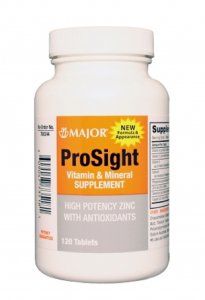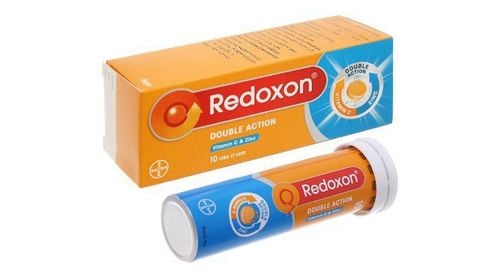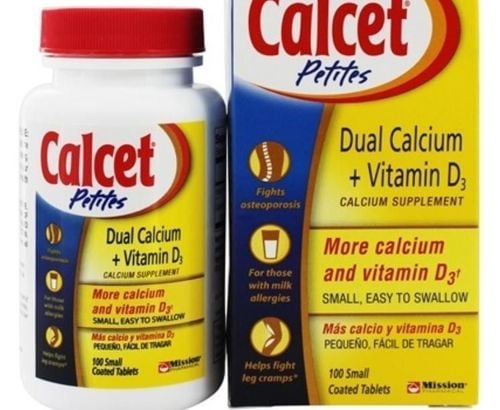This is an automatically translated article.
Nutritional needs for 2-year-olds are very high because they have started weaning. According to statistics, children aged 2-3 years are prone to malnutrition due to unbalanced diets. Therefore, building a reasonable and scientific diet for children from 2 to 4 years old is very necessary.The article was professionally consulted with Doctor Ho Thi Hong Tho - Neonatologist - Pediatrics - Neonatology Department - Vinmec Phu Quoc International General Hospital.
1. Calcium
Calcium builds strong bones and teeth, promotes healthy nerve and muscle function, aids blood clotting, and helps the body convert food into energy. Calcium requirements for children:From 1 to 3 years old: 700 milligrams (mg) per day; 4 to 8 years old: 1,000 mg per day. Dairy products such as milk, yogurt and cheese are the best sources of calcium for 2-year-olds. Also, some other calcium-rich foods you should try are:
Tofu Chocolate milk Whole grain bread Homemade puddings Boiled spinach/spinach/spinach Calcium-fortified soy milk.
2. Essential Fatty Acids (EFAs)
Essential fatty acids will build cells, regulate the nervous system, strengthen the cardiovascular system, strengthen immunity and help the body absorb nutrients. It is also essential for healthy brain function and vision.Every day 1 to 3 year olds need:
7,000 mg or 7 grams of omega-6; 700 mg or 0.7 grams of omega-3s. Every day children 4 to 8 years old need:
10,000 mg or 10 grams of omega-6; 900 mg or 0.9 grams of omega-3s. Good dietary sources of omega-3s for 3-year-olds include:
Walnuts Flaxseed oil, wheat germ oil, soybean oil, canola oil Eggs Tofu Salmon Soybean (dried, cooked) Boiled kale. Most 4-year-olds get more than the omega-6 they need, mostly from vegetable oils (sunflower, corn, and soy).
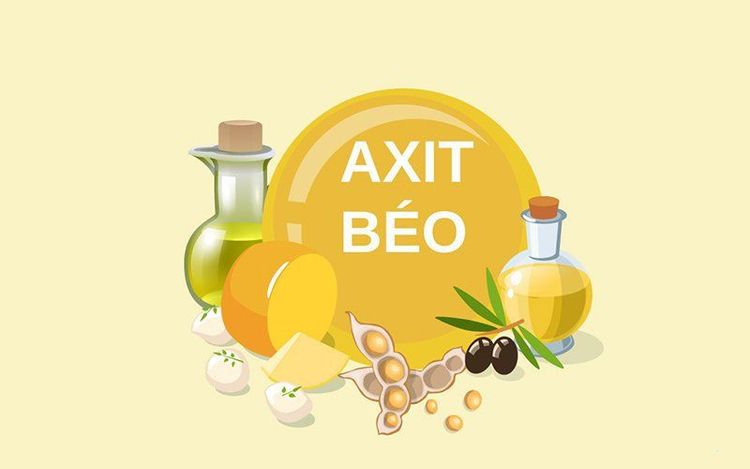
Axit béo thiết yếu sẽ xây dựng tế bào, điều hòa hệ thần kinh, tăng cường hệ tim mạch
3. Iron
Plays an important role in making hemoglobin - the red pigment that transports oxygen in the blood, and myoglobin - the pigment that stores oxygen in the muscles. A lack of iron in a 3-year-old's diet can cause anemia, leading to fatigue, weakness, and irritability.From 1 to 3 years old children need 7 mg of iron per day; Children 4 to 8 years old need 10 mg of iron per day. Iron can be found in many foods such as:
Iron-fortified instant cereals and oatmeals Raw tofu, soybeans Boiled lentils Baked beans with pork and tomato sauce Green beans Lean beef, meat braised bacon Hamburger with 95% lean meat Boiled spinach Black beans Whole wheat bread Raisins.
4. Magnesium
Magnesium keeps bones strong and heart rhythm steady, supports the immune system, and helps maintain muscle and nerve function. Magnesium requirements for children:From 1 to 3 years old: 80 mg per day; 4 to 8 years old: 130 mg per day. Nuts and beans are the best sources of magnesium. Green leafy vegetables are also good because they contain extra minerals. Magnesium is also found in whole-wheat bread. Some magnesium-rich foods you should add to your 2-year-old's nutrition are:
Whole grains: Roasted cashews Roasted cashews Oily roasted peanuts Soy milk Almond butter, peanut butter Boiled spinach Instant oatmeal Black beans Skimmed yogurt Long grain brown rice Banana Low fat milk Raisins Avocado.
5. Potassium
Potassium combined with sodium will control the balance of water in the body, helping to maintain blood pressure. It also supports muscle function and heart rate, as well as reducing the risk of kidney stones and osteoporosis in adulthood.Children 1 to 3 years old need 3000 mg of potassium per day; 4 to 8 years old need 3800 mg per day. Fresh fruits and vegetables are excellent sources of potassium. Milk, meat and cereals also contain potassium, but it is not easily absorbed. Some high-potassium dishes include:
Baked potatoes Raisins Tomato juice Orange juice Sunflower seeds Pumpkin Bananas Boiled Spinach Almonds Tomato Honey Watermelon.

Kali kết hợp với natri sẽ kiểm soát sự cân bằng nước trong cơ thể, giúp duy trì huyết áp
6. Vitamin A
Vitamin A plays an important role in vision and bone development; helps protect the body from infections; promotes the health and growth of cells and tissues in the body, including hair, nails and skin.Children 1 to 3 years old: 1,000 IU or 300 micrograms (mcg) per day; Children 4 years and older: 1,333 IU or 400 mcg daily. Colorful fruits and vegetables are rich in vitamin A, such as:
Carrots Cooked sweet potatoes Boiled and raw spinach Pumpkin Boiled kale Apricot juice Green and red bell peppers Mango Boiled broccoli Beans Dutch boiled Tomato juice Canned peaches, fresh peaches Eggs Cheddar cheese.
7. Vitamin C
Vitamin C helps form and repair red blood cells, bones and tissues; helps children's gums stay healthy and strengthens blood vessels, minimizing bruising; Supports healing, strengthens the immune system and prevents infections. It also helps the body absorb iron from iron-rich foods.Children 1 to 3 years old: 15 mg per day; 4 to 8 years old: 25 mg per day. Brightly colored fruits and vegetables are excellent sources of vitamin C, including:
Guava Orange Red Bell Pepper Papaya Kiwi Broccoli Strawberries Pink Grapefruit Mango Tomato Spinach Spinach Boiled Potato Banana.
8. EASY Vitamins
Helps the body absorb minerals like calcium, to build strong teeth and bones. Essential to achieve maximum growth potential and bone mass. Also functions as a hormone with a role in immune system health, insulin production and regulation of cell growth.Newborns to 12 months: 400 IU or 10 mcg daily; Children over 1 year: 600 IU or 15 mcg daily. Vitamin D is known as the "sunshine vitamin" because the body can produce it when the skin is exposed to sunlight. But a child's body can't make vitamin D when he's wearing clothes or wearing sunscreen to block the sun's rays. It is necessary to spend 5 - 30 minutes playing outside between 10 a.m. and 3 p.m., at least twice a week to produce the recommended amount of vitamin D.
However, experts warn that ultraviolet radiation from the sun is the main cause of skin cancer. So consider giving your 4-year-old something naturally or fortified vitamin D, such as:
Salmon Fortified yogurt Canned, fresh and oil-infused tuna Fortified orange juice Milk (whole) , low-fat or skim) fortified Fortified cereal Mackerel Egg Yolk Fortified margarine Fortified cheese.
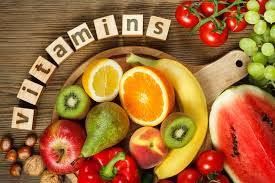
Vitamin D giúp cơ thể hấp thụ các khoáng chất như canxi, để xây dựng răng và xương chắc khỏe
9. Vitamin E
Limit the production of free radicals, which can damage cells. Important for immunity, DNA repair and other metabolic processes.From 1 to 3 years: 6 mg or 9 IU of vitamin E daily From 4 to 8 years: 7 mg or 10.5 IU daily Vitamin E can be found in many foods, including fruits, vegetables , nuts and seeds. Some of the best sources of vitamin E include:
Roasted Almonds Wheat Germ Oil Roasted Sunflower Seeds Peanut Butter, Roasted Peanuts Kiwi Boiled Spinach Boiled Broccoli Soy Oil Mango.
10. Zinc
Essential for over 70 enzymes that aid digestion and metabolism, as well as general growth.From 1 to 3 years old: 3 mg per day; 4 to 8 years old: 5 mg per day. Zinc can be found in many foods, such as:
Baked beans with pork and tomato sauce Cooked beef, steak Hamburger with 95% lean meat Instant breakfast cereal, fortified 25 % zinc Roasted almonds Low-fat fruit yogurt Cashew butter, no salt added Instant oatmeal Roasted chicken thighs Tofu Boiled peas Skinless chicken breasts Mozzarella/cheddar cheese Milk. In general, diets for 3-year-olds do not need to receive the recommended amount of nutrients each day. Instead, aim to average over a few days or a week. The amount of nutrients in a food will vary depending on the brand or type of meat. Note, young children should eat foods that are thinly sliced, mashed or cut into small pieces to avoid choking. What a 4-year-old child eats depends on his age and individual appetite. Your task is to estimate the nutritional content accordingly.
For children to be healthy and develop well, it is necessary to have a nutritious diet in terms of quantity and quality balance. If children are not provided with adequate and balanced nutrients, it will lead to diseases of excess or lack of nutrients, which adversely affect the comprehensive development of children in terms of physical, mental and motor skills.
Children who do not eat properly are at risk of micro-mineral deficiency causing anorexia, growth retardation, malabsorption,... If they notice the above signs, parents should supplement their children with products. The supplement contains lysine, essential micro-minerals and vitamins such as zinc, chromium, selenium, and B vitamins to help fully meet the nutritional needs of children. At the same time, these essential vitamins also support digestion, enhance nutrient absorption, help improve anorexia, and help children eat well.
Parents can learn more:
Signs of zinc deficiency in children
Micronutrient deficiency and failure to gain weight in children
Please regularly visit Vinmec.com website and update useful information to take care of your child. Take care of the baby and the whole family.
Reference source: .babycenter.com







